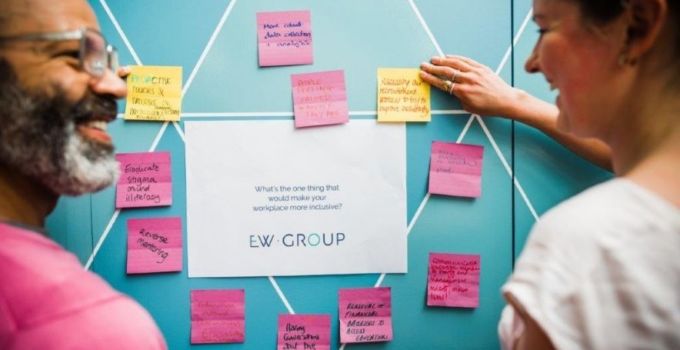Leading diversity training in the UK, Europe, USA and beyond
Successful modern companies know that they have to take equity, diversity and inclusion seriously, not just because it’s the right thing to do, but also as it leads to better business. For over 35 years we have delivered bespoke equity, diversity, and inclusion training courses for countless large and small organizations.
Suitable for staff at all levels, across every sector, our training will develop your employees’ ability to overcome unconscious bias, bullying and poor wellbeing. What’s more, it will support your business and its leaders in nurturing an organizational culture that understands and emphasizes equity and diversity and is up to date with all relevant equality law and diversity principles.
Our diversity training themes
There are many ways to enhance your business’s equity, diversity and inclusion. We’ll tailor a plan to your specific needs and can deliver virtually or in person, backed up with a suite of customizable diversity elearning modules.
Your needs, our expertise
Our practical, positive methodology focuses on real-life scenarios
To truly incorporate diversity training into your business, our experience shows that a collaborative, tailor-made approach is the most effective. We structure our program around your existing culture and values, with the specific challenges you’re facing acting as our compass.
To do this, we start with a thorough analysis of your training needs, including an inception meeting to agree upon success criteria and KPIs, followed by telephone interviews with staff and management for a better understanding of your obstacles. We review all of your existing policies, documentation and guidance, as well as your training materials, current frameworks and previous evaluations.
There will always be things that you do exceptionally well, and these will be the foundation of our equity, diversity and inclusion training, allowing you to utilize your strengths for improvement. From here, we use our positive, practical, and solution-focused method to better and build on your successes, creating a bespoke cross-cultural and interdisciplinary program for your business.
Get in touch
What our clients say
Improve market share
Diverse organizations are 45% more likely to improve their market share
D&I increases performance
85% of the world’s CEOs say a clear diversity and inclusion strategy leads to increased performance

Diversity & inclusion training
A sample diversity and inclusion training course outline
- The business case for equity, diversity and inclusion in your organization
- The Public Sector Equality Duty – case studies and scenarios
- The Equality Act 2010 – the protected characteristics
- Discrimination
- Bullying and harassment
- Cultural adaptability and working with social and cultural differences
- Reasonable adjustments
- Equity of opportunity and positive action
- Recognizing unconscious bias in yourself and others
- Working inclusively in teams
- Managing equity and diversity at work
- Responding to change
- Effective mitigation tools
- Identifying and challenging unwanted or unlawful behaviors
What our clients say
Diversity & Inclusion FAQs
What are the benefits of diversity and inclusion in the workplace?
A focus on workplace diversity and inclusion will not only ensure a happier and more engaged workforce, wider perspectives, and better in-depth understanding of customers and their priorities, it will directly affect an organization’s bottom line.
What’s the difference between equity training and diversity training?
Equity training and diversity training often go hand in hand, but they are not exactly the same. Diversity training is all about understanding the positive nature of the differences between social groups, cultures and people, while equity training is about removing barriers to opportunity based on individuals’ characteristics.
How does diversity affect employee training and development?
From hiring, to training and development, your organization will have to consciously handle inclusion and promote equity, while showing its accountability and willingness to progress. Your employees will benefit from better culture, more equal chances for development, and training that takes into account the specific challenges they face as individuals, ultimately building a stronger foundation for your business.
How do you get the diversity data you need?
Improving workplace diversity is not just about words — it is hugely reliant on having the right type and volume of data, as well as being able to analyze it correctly to guide your strategies and efforts. In order to collect this data, you need to set a benchmark, work out what you want to measure, create reports, and be able to communicate to gather it.




